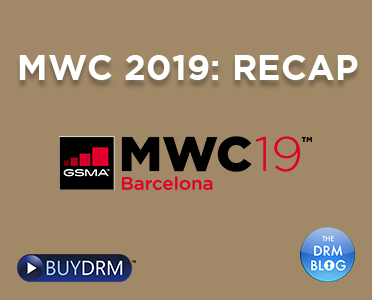It was exciting to visit Mobile World Congress in Barcelona this year. The organization was flawless at every step with dedicated subway lines and BREZE access which left a very positive impression about the event. But the event itself just blew my mind. The size and the number of all kinds of new technologies starting from startup companies bringing any picture to your sneakers and ending with electric cars of the future from BMW, Audi and others.
Not DRM related stuff
Speaking of technologies, after the big Samsung and Huawei presentation everyone wanted to touch, sniff and lick the Galaxy Fold from Samsung and Mate X from Huawei to see if it cures cancer. Though no such miracle happened, the devices looked like something out of this world. Their price remains out of this world as well. Without a clear understanding of the final audience and the final price, it will be quite some time until you will see yourself unboxing one of the devices on Christmas Eve.
Another leader amongst this year’s trends with it's logo on almost every booth and that was discussed all over the place was 5G. It’s usage in IoT, smart sensors for your smart and not so smart homes, automotive sector, mobile internet and so on. 5G was everywhere and even companies that didn’t have 5G solutions/products to present were speaking about it.
With ever-growing connection speeds (I bet we will see 6G next year) and powerful smartphones shown at every third booth at MWC, you don’t really think about slow network speeds or low bit rates for your content. But, Fraunhofer, long time partner of BuyDRM does think about it. Not only think, but takes action as well. They came to the MWC with their xHE-AAC and VVC codecs. xHE-AAC - the latest audio codec for music and video streaming is now shipped with Android Pie. You get a good quality even on low bit rates. You can go as low as 12 kbps and have great sound quality which is perfect for your radio streams and podcasts to cover slow internet connections which allow you to reach a wider audience. You also get seamless bit rate switching over DASH and HLS plus loudness and dynamic range control to allow you to hear human speech loud and clear, even in noisy environments. Another good thing about this codec being shipped with Android Pie is that it is supported in your every day DRM scenarios.
The Versatile Video Coding, or VVC was a video codec demoed by Fraunhofer at their booth. It’s a successor of HEVC and expected to provide 50% bit rate reduction over HEVC when finalized in 2020. During a demo we saw unpredictable scenes like fire, rain puddles and grass to be clearer and richer in details in comparison to HEVC. The solution is not yet finalized but already shows a lot of promise.
AI powered cars and other every day things like mirrors and outdoor sensors. AI powered platforms like big data analytics solutions and detailed sports statistics based on previous games or current game replays and many other AI powered things were shown as well.
Let’s speak content protection
BuyDRM went to MWC this year to meet with existing and potential customers as well as meet with and search for new partners to expand our already impressive partner base.
We brought to their attention the new KeyOS ESP program that allows an existing or new partner to be accredited by BuyDRM specialists validating their Encryption solution, Server solution or Player is working according to defined BuyDRM standard and are safe to use by BuyDRM customers or our partner’s customers.
We also brought to our customers the KeyOS MultiPlay for Web, a HTML5 player which was missing from our products and forced customers to use 3rd party solutions. We now offer it as a product if one requires an easy to setup player, but it doesn’t mean that we close the door for players that our customers bring with them as well as players that our partners provide. The KeyOS platform is still very flexible.
Trustonic brought interesting news to the congress on the hardware side. They have partnered up with Huawei to bring first Multi-TEE security platform for mobile app developers. The Trustonic Application Protection, or TAP for short was expanded. Until now, TAP enabled app developers to build apps secured by both strong application shielding for iOS and Android, and hardware-based protection Android devices embedded with Trustonic’s TEE during manufacturing. The new Multi-TEE allows you to write your application once using Trustonic’s SDK and be sure that parts of the app that you choose to run in TEE will run even if the device doesn’t have Trustonic’s TEE on it. With Trustonic partnering up with Huawei, who knows what awaits us around the corner. More collaborations may be planned that will surprise us.
The Congress was eye opening in terms of the times we live in. Cutting edge technologies to power your everyday life available for everyone to use, not in fifty years, but today.












